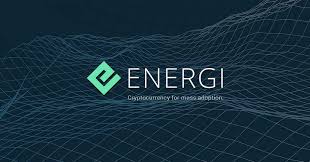Filecoin is a decentralized storage system where users can rent out free hard drive space. For this, they receive payment in the FIL cryptocurrency.
The development of the Filecoin project began back in 2014. And in the fall of 2017, the project raised $ 257 million through an initial coin offering (ICO), which became one of the largest ICOs in the history of the crypto market.

Filecoin is developed by Protocol Labs, which aims to develop technologies for the next generation of decentralized Internet Web 3.0. Protocol Labs also owns the development of the IPFS and libp2p protocols. Major investors have invested in this company: Digital Currency Group (parent company of CoinDesk), Naval Ravikant, Union Square Ventures, Winklevoss Capital, and Y Combinator.
Filecoin’s main net was originally slated to launch in early 2019 but has been postponed several times due to complex development. Nevertheless, the Filecoin main net was still launched on October 15 last year, causing a stir among the representatives of the crypto community – in half an hour more than $ 200 million was invested in the project. At the same time, the project’s coin was immediately added to the listing of the main crypto-exchanges of the market, such as Huobi, OKEx, and Binance, and the starting price of FIL trades was an impressive $ 26.83.
How do the Filecoin project and the FIL coin work?
The Filecoin network is built on top of IPFS (InterPlanetary File System), a distributed storage system. IPFS integrates a network of peer-to-peer nodes, each of which stores only a fraction of the shared files of the entire system.
Thus, IPFS provides data storage, and the Filecoin network allows you to rent out free space on a computer’s hard drive in exchange for a reward in the FIL. At the same time, IPFS allows you not to be afraid of censorship: uploaded files cannot be deleted from the network, and a site based on this system cannot be closed.
As for the FIL coins, their emission is limited. So, a total of 2 billion coins will be issued, which will be gradually distributed over 16 years. Now there are only 68 million FILs in circulation.
Miners play a fundamental role in keeping the Filecoin network up and running. Decentralized storage users pay network miners to store, retrieve and distribute data. The size of the miners’ commission is determined by the supply and demand for data storage, as well as the user-selected transfer rate. In other words, the higher the data transfer rate, the more expensive the miner’s commission.
There are two types of miners in Filеcoin:
– custodian miners – provide their hard drives for user data and store the complete history of the blockchain;
– recipient miners – extract and provide files to users outside of the Filecoin blockchain: this way the search and extraction of data are much faster.
At the same time, mining on the Filecoin network does not require special equipment – any network user who leases space on his hard disk in exchange for FIL can become a miner. Thus, to become a miner, you need free hard disk space and access to the Internet. The greater the amount of memory provided by the miner, the more chances that the algorithm embedded in Filecoin will choose to create a new block.
Data storage in Filecoin works like this:
Users connect to the Filecoin blockchain through one of the applications: example, Slate, ChainSafe Files, and Space Storage.
Then, based on the desired storage fee and data transfer rate, they select miners in the Storage Market. After that, the files are transferred in encrypted form to the selected custodian miner – this is recorded in the blockchain, and the user receives a private key to access them.
Miners contribute collateral, which they can lose if, when checking the status of the network, the consensus algorithm discovers that the miner has committed some violation, for example, is offline or no longer stores user data.
At the same time, to ensure a higher level of security, user files are stored simultaneously by several miners. So, even if an illegal miner decides to disconnect his computer from the network, then users will not lose access to their files.
To get the data back, the client places an order on the Retrieval Market and selects a miner who returns them for a fee to the FIL.
Filecoin uses two unique consensus algorithms to ensure that miners comply with all the rules of the network:
- Proof-of-Spacetime (PoSt, proof of space and time) – when generating a block, the network verifies that the miner stores data for an agreed period;
- Proof-of-Replication (PoRep, evidence of replication or synchronization of different copies) – confirms that miners keep the stated number of copies of files.
In case of violations, miners receive fines. At the same time, any network user can check their conscientiousness – each miner has a reliability rating: the higher this indicator, the more chances the miner has to receive data for storage.
Filecoin is a promising project, and investing in FIL can be a profitable investment. If the project continues to actively develop, and the bullish trend on the crypto market continues, then we can still see multiple rises in the FIL price.
But coin investors need to be prepared for strong volatility and surges by tens of percent. At any time, the bullish trend can end, as happened with the coin in early April.











